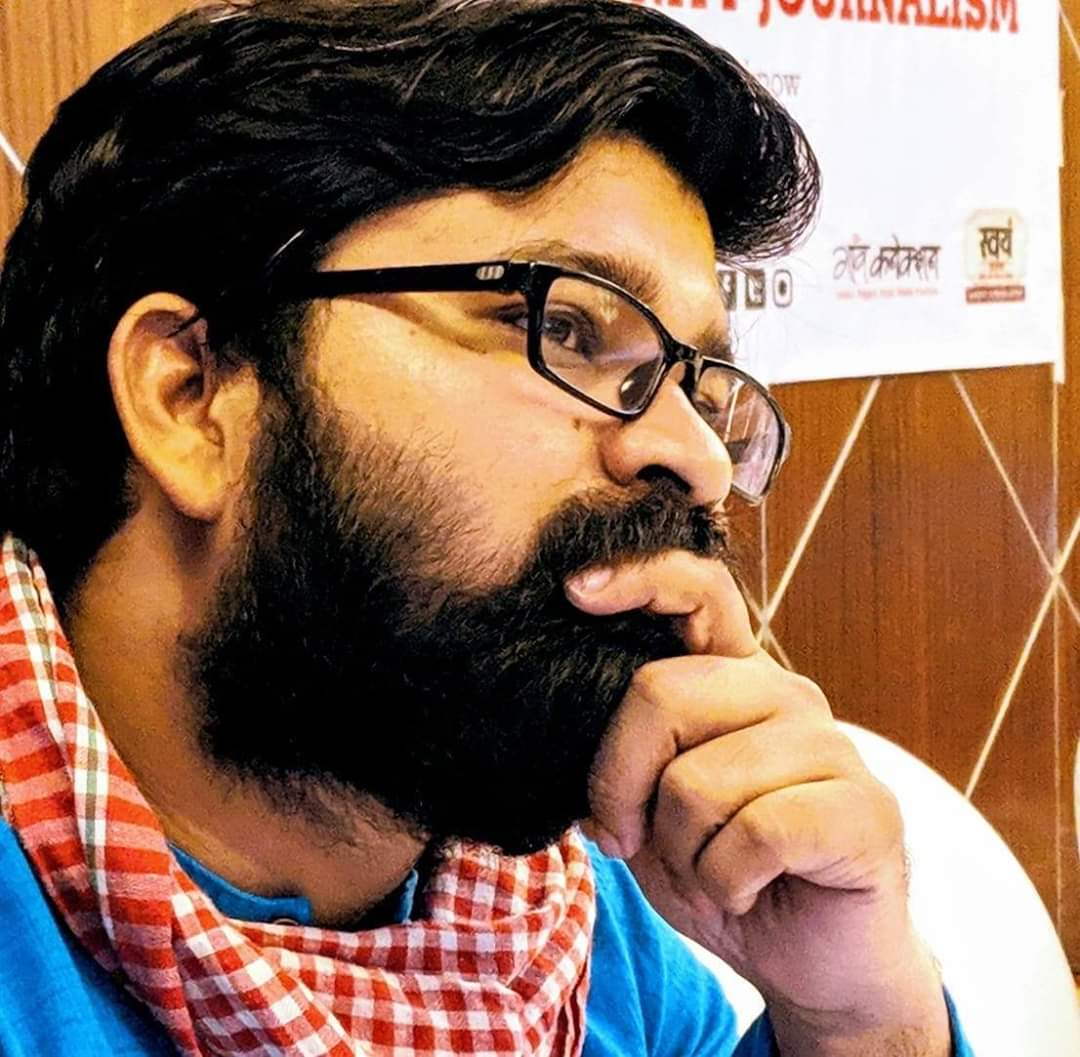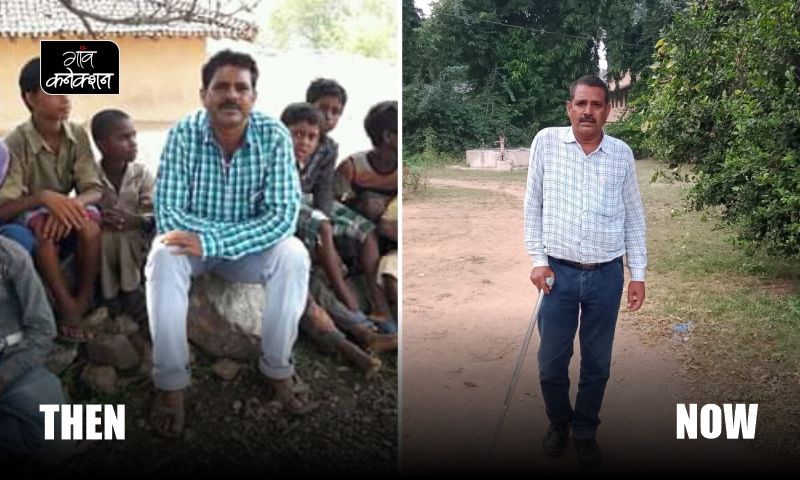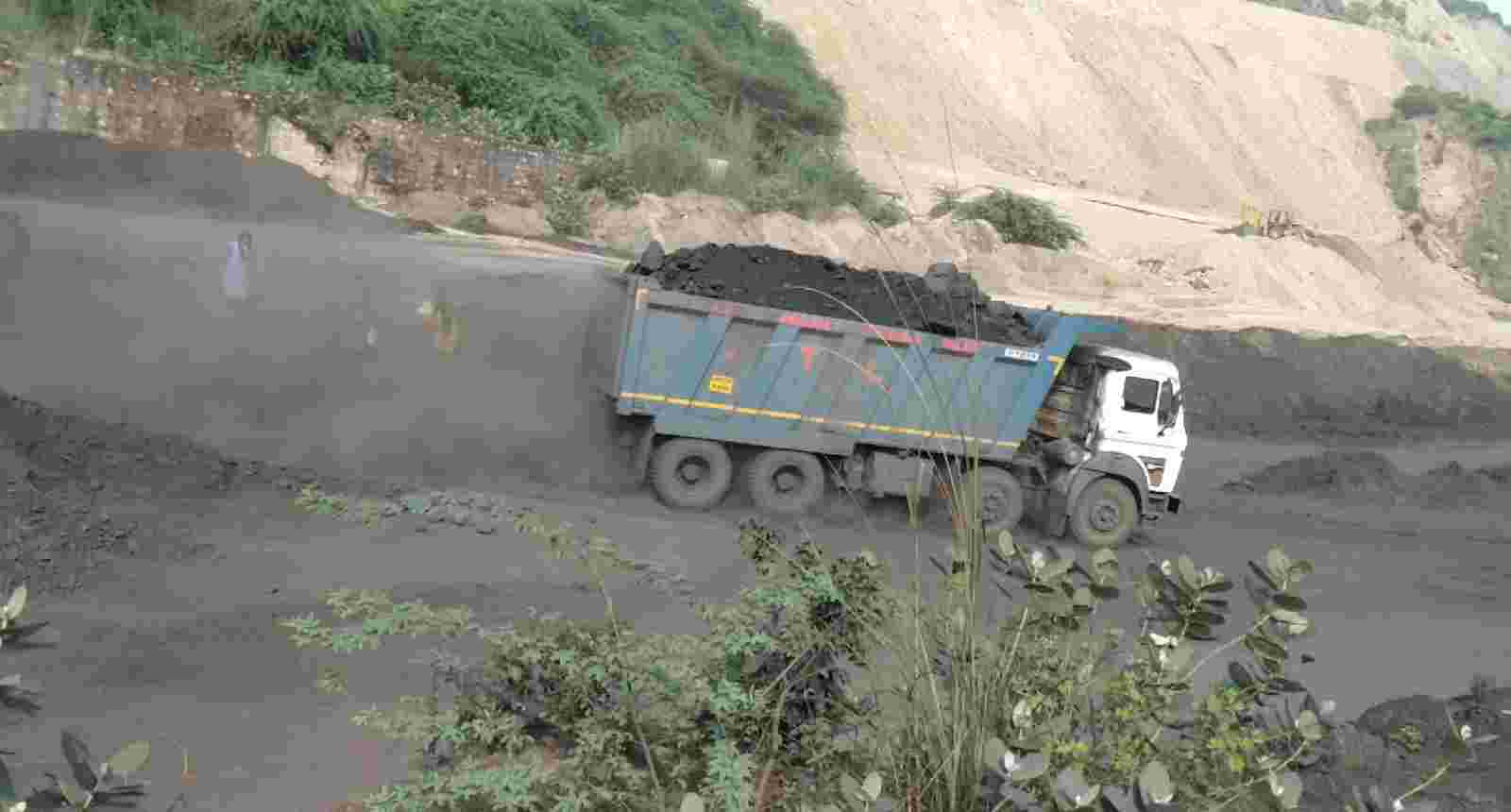Sonbhadra: The darker aspect of the golden glow
This district in Uttar Pradesh grabbed headlines recently when it was reported that 3,000 gold deposits were discovered here. It was later reported that the quantity was much less. However, there is a dark side to Sonbhadra, which falls in the coal belt


“My bones are getting weaker. Now I can walk only with crutches. The doctor has told me that because the amount of fluoride in my drinking water is very high, I suffer from fluorosis. Here, you will find hundreds of people like me who are getting old in their youth,” said Jagat Narayan Vishwakarma.
He lives in the Myorepur block of Sonbhadra district in Uttar Pradesh.
The Sonbhadra district has been grabbing headlines recently after reports surfaced that gold reserves were discovered in Sone Hill and Hardi areas in the district. As per the media reports, 3,000 tonnes of gold, worth Rs 12 lakh crore, was found in the district, but the Geological Survey of India later clarified that only 160 tonnes of gold can be brought from the available 3,000 tonnes of gold ore.
The Sonbhadra district, which borders four states, is an industrial area. Many minerals such as bauxite, limestone, coal and gold are already present in its soil. There are also many power plants in Sonbhadra and the 10 coal-based power plants in the Singrauli-Sonbhadra region generate 21,000 MW of power supplied to the nearest states.
Providing revenue of about Rs 27,198 crore from mining every year to the Uttar Pradesh government, Sonbhadra, however, has an often hidden, dark side. The All India Institute of Ayurveda (AIIA) had taken a number of samples from certain villages of Sonbhadra-Singrauli in the year 2018. According to its report, about 20 lakh people living in Sonbhadra-Singrauli area, spread over an area of 40 kms, are reeling under mercury pollution. This is causing health issues like miscarriages in women, diseases like anemia and BP. There is no fruit in the orchards, the crop production is declining.
The Central Pollution Control Board had placed Sonbhadra in the list of 22 severely polluted areas for the year 2018. The report had said that mercury, which is among the six most polluting concerns of the Earth, permeates its air. Fly ash is believed to be responsible for this. Last year, when Delhi was reeling under severe pollution, its air quality index was actually worse than Delhi. It still is.

In fact, air quality indices have been created to measure air quality in every country, which tells us how pure is the air which we breathe in, what is the level of nitrogen dioxide, carbon monoxide and sulphur dioxide in it.
In Sonbhadra, the fly ash emanating from coal mines is causing fatal diseases like cancer in the people. As per the National Green Authority Act (NGT) Act, enacted to address matters relating to environmental protection and conservation of forests and natural estates across the country, heavy metals such as arsenic, silica, aluminium and iron in fly ash can cause asthma, lung disorders, TB and cancer.
The coal-based power plants in the Singrauli-Sonbhadra belt, located on the border of Uttar Pradesh and Madhya Pradesh, consume 103 million tonnes of coal in a year. The consumption of such a large quantity of coal produces about 35 million tonnes of fly ash each year, which does not get proper disposal and has gotten concentrated in air, water and soil of the region.
India’s largest power generation plant, the National Thermal Power Corporation (NTPC), Vindhyanchal’s giant ash dam (Rakhar Dam) at Shahpur gave away on October 6, 2019. In this dam, the ash (fly ash) is deposited after the burning of coal in the power plants.
The ash that emerged from the NTPC plant was about 35 metric tonnes (more than seven crore quintal) and was discharged into the Rihand Dam on Renuka River. The dam supplies drinking water to about 20 lakh people of Sonbhadra-Singrauli region. Such an act of gross negligence went largely unnoticed.
Last year, when I went to Sonbhadra for reporting, there was so much ashes on the roads that one could not even walk two-four kilometres without helmets or scarves. Coal laden dumpers also trample the common people along the roads. Amit Pandey, a colleague reporting from Sonbhadra-Singrauli, informed: “I have sought information from several police stations. Last year, there were a total of 450 accidents in Sonbhadra-Singrauli strip in which 119 people lost their lives and 474 people were seriously injured. Coal vehicles are responsible for most of these accidents.”
On the petition of Jagatnarayan Vishwakarma, the All India Institute of Ayurveda (AIIA) had examined the water and soil of Singrauli area in the year 2018, after which it was found that it was dangerous to live in the Sonbhadra-Singrauli belt.

He informed, “In the year 2001, I found out that the water where I live is severely contaminated. People are becoming handicapped very rapidly. Five, six people were handicapped in one house. The investigation revealed that the amount of fluoride in the water here is very high, which is why people have fallen prey to a disease called fluorosis. I had raised the issue of pollution in Singrauli region and resolved to educate people about it, but today, I too stand as its victim.”
Eminent Doctor AK Das of Banaras Hindu University had initially treated Jagatnarayan. “His knee bones are weakening,” he explained. “This is caused by fluoride. This stage is called fluorosis. There can’t be any operation. It is difficult to say whether Jagatnarayan will now be able to walk without sticks.”
Before 2001, people of Sonbhadra district were unaware that the amount of fluoride in the water they drink is very high. Jagat Narayan had facilitated an examination of the disabled people of Kushmaha Raphari of Myorepur block. After their examination, it was learnt that the fluoride content in Sonbhadra water is so high that people are falling to fluorosis and are getting handicapped.
Dr Neetu, a gynaecologist at the Ram Manohar Lohia Institute, Lucknow, said: “Fluoride-rich water is harmful to everyone. If a pregnant woman is constantly drinking fluoride-rich water, it is very harmful for the woman as well as the baby in her womb. Sometimes its side effects also lead to a crippled child. So, one must always drink clean water.”
GP Shukla, Chief engineer (rural) of Uttar Pradesh Jal Nigam, the department responsible for providing drinking water to the people in Uttar Pradesh, informed Gaon Connection, “Due to excessive tapping, the groundwater is depleting rapidly. Also, contaminated water emanating from factories is being released into rivers and is contaminating the groundwater. The state government is going to provide pipeline water in fluoride affected districts by March 2021. Work is being carried out on a war footing.”
According to the report prepared by the Centre for Science and Environment (CSE) after the survey at Sonbhadra-Singrauli in the year 2012, the fluoride content in the water is more than 2 mg. Internationally, 0.5 mg fluoride per litre is considered safe while this rate is fixed at 1mg per litre in India.
The 35-year-old Hira Lal, who lives in Shakshakti Nagar in Sonbhadra, is anxious because of his three-year-old child’s health. He said: “My son is only three years old. He has asthma. Most of the children living here suffer from asthma. We close the doors of our homes as soon as the evening sets in. We do not dry clothes on rooftops because they turn sooty.”
Hira Lal lives in Chilkatad village. The village is located just a few miles from the local site of Northern Coalfields Limited (NCL), a coal extraction company. There are many families in the village whose generations are disabled.

Jagatnarayan continues to work tirelessly on pollution issues. He has also gone to the Supreme Court. Taking cognizance of his petition, the NGT visited the plants of Singrauli and Sonbhadra in the year 2014. After inspecting the area, the NGT had given strict orders, from the environmental point of view, that the ash from power plants must be provided 100% disposal. However, companies are still not complying with this order.
Talking about fluorosis, he said: “I have visited hundreds of villages, so far, to make people aware. In the meantime, wherever I went, I drank common water. I knew it was dangerous but there was no other option for me. Now I regret it.”
He added: “In the year 2016, Vanwasi Sewa Ashram conducted a survey in nearby villages. Then we came to know that the villages of Parwakundwari Piparwan, Jhirgadandi in Chopan block, Manbasa, Kathouti, Malauli, Katauli, Jharokalan, Duddhi villages in block Duddhi, Kusamaha, Govindpur, Khairahi, Rasprahari, Barvantola, Piparhawa, Sevkadand, Khamaharaya, Harawariya, Jhara, Navatola, Rajmilam, Dudhar, Chetwa, Nemna villages in Myorepur block and Bakulia, Barbai, Gughari and Khairadih villages in Babhuni block have their inhabitants suffering ill health due to fluoride.”
Ashwani Kumar Dubey, an environmentalist and Supreme Court lawyer, said: “See, Sonbhadra-Singrauli already suffers from serious environmental issues. The guidelines of the Court and the government are not adhered to, here. With the discovery of gold mines, it is obvious that the land will be dug up for gold, trees will also be cut, it will cause further environmental decay. Gold must be extracted, but it should not harm the nature.”

